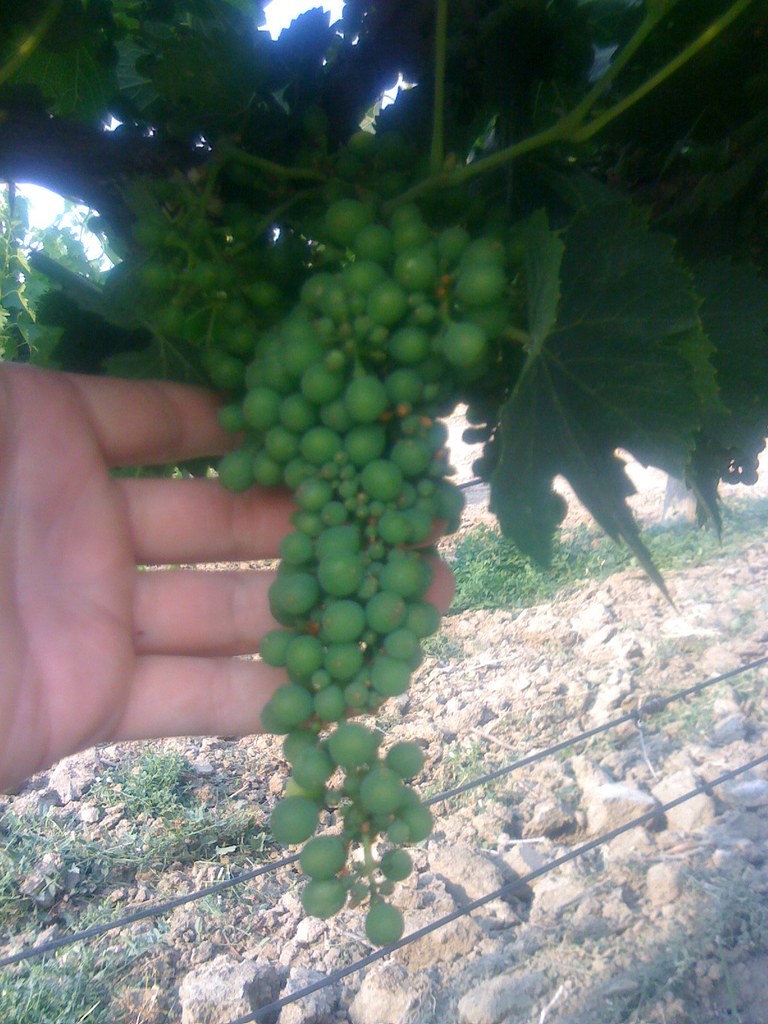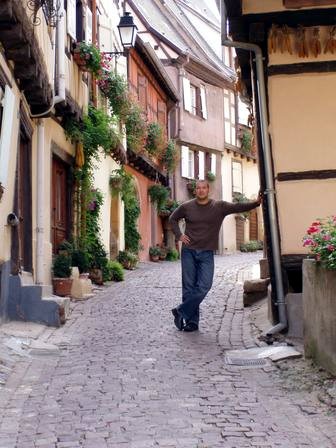Friday, June 27, 2008
Shatter
2008 is proving to be a tricky year for wine growing in Paso Robles, for a lot of reasons.
With severe frost in the first few weeks after budbreak, many grapevines in the colder areas had their primary shoots frost burned down to the cordon. When this happens, the vine has a safety mechanism - the main bud has secondary and tertiary buds which, while smaller and less robust, at least allow the vine a second chance at getting some shoots and leaf area out for growth during that season. The problem is that these secondary shoots are weaker, and typically contain few viable clusters - and those that actually are able to pollinate and set will be weeks behind the rest of the vine in maturity, making harvest a nightmare of over-ripe and under-ripe side by side on the same vine.
For varieties and locations that escaped frost damage, the extreme swings in temperature have had further implications. Much of Paso Robles' Cabernet Sauvignon (along with other Bordeaux varieties like Cab Franc, Sauv Blanc, and to some extent Merlot,) all seemed to bloom right around the time that warm, balmy weather changed back to cold days and nights with drizzle and overcast. Although grape vines have perfect flowers, (they have male and female parts right on the same flower, so they don't require bees or insects to help with fertility,) they don't do well with cold, wet weather. When this happens, we are left with a lot of "Shatter" the name for the stage at which the vine aborts the unfertilized berries, and when you shake a cluster at this stage, the dried up brown berries fall out of the cluster, leaving only the viable berries behind, reducing the crop sharply. (See the lower photo above - these clusters have 100% shatter, or NO BERRIES AT ALL!)
Sometimes there is incomplete fertilization - the berry fertilizes, but the seed inside doesn't grow. This condition is called "Hen & Chicks" - in the middle photo you can see how the berry size is mixed - some berries are sizing up - they are normal and have 2-3 seeds in each. The small berries do not have viable seeds, and they will remain tiny and sour. If the vine gets stressed, the small berries will become necrotic and fall out of the cluster later in the year. If this doesn't happen until the other berries size up, they can become trapped inside the cluster and promote growth of mold and disease. If they stay living in the cluster, they can go through to harvest and contribute their green, unripe, tart flavors to the wine.
The bottom photo shows the most extreme example of infertility - this is at a block of our Petite Sirah which was frost damaged, and then just recovered when it was hammered by cold weather during bloom. The vine just gave up on reproducing this year, and the clusters have all died and dried up. Very sad, but it is a mechanism that will allow the vine to put all of its energy into storing carbohydrates for next year, when it will make a renewed attempt at carrying a crop load.
Overall, estimates seem to be that we will have a 20-30% smaller crop than average this year locally for Cabernet Sauvignon, and several other varieties will be affected as well. The bigger picture seems similar - there were severe frost events throughout Northern and Central California which should make for a very small overall grape harvest, (and thus potentially higher prices for grapes on the spot market this year, and for bulk wines early next year.)
Subscribe to:
Post Comments (Atom)




No comments:
Post a Comment